Citibank 2012 Annual Report Download - page 56
Download and view the complete annual report
Please find page 56 of the 2012 Citibank annual report below. You can navigate through the pages in the report by either clicking on the pages listed below, or by using the keyword search tool below to find specific information within the annual report.-
 1
1 -
 2
2 -
 3
3 -
 4
4 -
 5
5 -
 6
6 -
 7
7 -
 8
8 -
 9
9 -
 10
10 -
 11
11 -
 12
12 -
 13
13 -
 14
14 -
 15
15 -
 16
16 -
 17
17 -
 18
18 -
 19
19 -
 20
20 -
 21
21 -
 22
22 -
 23
23 -
 24
24 -
 25
25 -
 26
26 -
 27
27 -
 28
28 -
 29
29 -
 30
30 -
 31
31 -
 32
32 -
 33
33 -
 34
34 -
 35
35 -
 36
36 -
 37
37 -
 38
38 -
 39
39 -
 40
40 -
 41
41 -
 42
42 -
 43
43 -
 44
44 -
 45
45 -
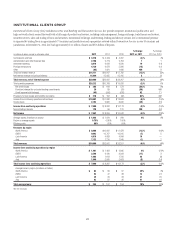 46
46 -
 47
47 -
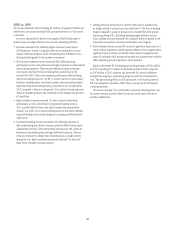 48
48 -
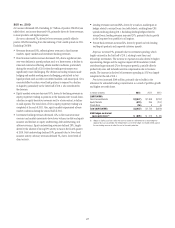 49
49 -
 50
50 -
 51
51 -
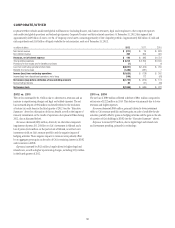 52
52 -
 53
53 -
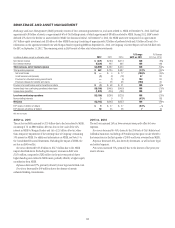 54
54 -
 55
55 -
 56
56 -
 57
57 -
 58
58 -
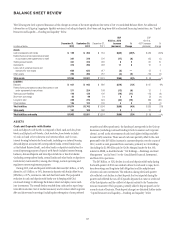 59
59 -
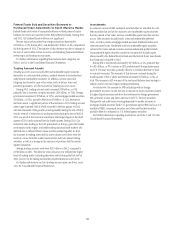 60
60 -
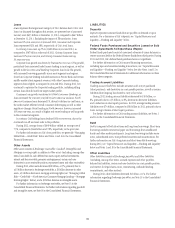 61
61 -
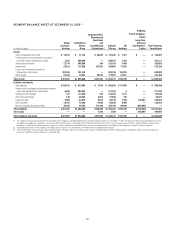 62
62 -
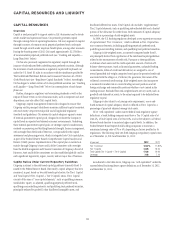 63
63 -
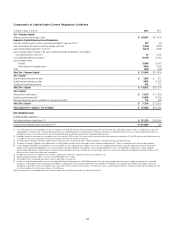 64
64 -
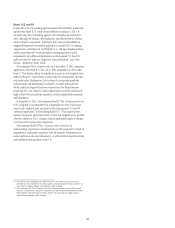 65
65 -
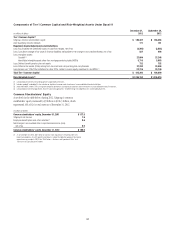 66
66 -
 67
67 -
 68
68 -
 69
69 -
 70
70 -
 71
71 -
 72
72 -
 73
73 -
 74
74 -
 75
75 -
 76
76 -
 77
77 -
 78
78 -
 79
79 -
 80
80 -
 81
81 -
 82
82 -
 83
83 -
 84
84 -
 85
85 -
 86
86 -
 87
87 -
 88
88 -
 89
89 -
 90
90 -
 91
91 -
 92
92 -
 93
93 -
 94
94 -
 95
95 -
 96
96 -
 97
97 -
 98
98 -
 99
99 -
 100
100 -
 101
101 -
 102
102 -
 103
103 -
 104
104 -
 105
105 -
 106
106 -
 107
107 -
 108
108 -
 109
109 -
 110
110 -
 111
111 -
 112
112 -
 113
113 -
 114
114 -
 115
115 -
 116
116 -
 117
117 -
 118
118 -
 119
119 -
 120
120 -
 121
121 -
 122
122 -
 123
123 -
 124
124 -
 125
125 -
 126
126 -
 127
127 -
 128
128 -
 129
129 -
 130
130 -
 131
131 -
 132
132 -
 133
133 -
 134
134 -
 135
135 -
 136
136 -
 137
137 -
 138
138 -
 139
139 -
 140
140 -
 141
141 -
 142
142 -
 143
143 -
 144
144 -
 145
145 -
 146
146 -
 147
147 -
 148
148 -
 149
149 -
 150
150 -
 151
151 -
 152
152 -
 153
153 -
 154
154 -
 155
155 -
 156
156 -
 157
157 -
 158
158 -
 159
159 -
 160
160 -
 161
161 -
 162
162 -
 163
163 -
 164
164 -
 165
165 -
 166
166 -
 167
167 -
 168
168 -
 169
169 -
 170
170 -
 171
171 -
 172
172 -
 173
173 -
 174
174 -
 175
175 -
 176
176 -
 177
177 -
 178
178 -
 179
179 -
 180
180 -
 181
181 -
 182
182 -
 183
183 -
 184
184 -
 185
185 -
 186
186 -
 187
187 -
 188
188 -
 189
189 -
 190
190 -
 191
191 -
 192
192 -
 193
193 -
 194
194 -
 195
195 -
 196
196 -
 197
197 -
 198
198 -
 199
199 -
 200
200 -
 201
201 -
 202
202 -
 203
203 -
 204
204 -
 205
205 -
 206
206 -
 207
207 -
 208
208 -
 209
209 -
 210
210 -
 211
211 -
 212
212 -
 213
213 -
 214
214 -
 215
215 -
 216
216 -
 217
217 -
 218
218 -
 219
219 -
 220
220 -
 221
221 -
 222
222 -
 223
223 -
 224
224 -
 225
225 -
 226
226 -
 227
227 -
 228
228 -
 229
229 -
 230
230 -
 231
231 -
 232
232 -
 233
233 -
 234
234 -
 235
235 -
 236
236 -
 237
237 -
 238
238 -
 239
239 -
 240
240 -
 241
241 -
 242
242 -
 243
243 -
 244
244 -
 245
245 -
 246
246 -
 247
247 -
 248
248 -
 249
249 -
 250
250 -
 251
251 -
 252
252 -
 253
253 -
 254
254 -
 255
255 -
 256
256 -
 257
257 -
 258
258 -
 259
259 -
 260
260 -
 261
261 -
 262
262 -
 263
263 -
 264
264 -
 265
265 -
 266
266 -
 267
267 -
 268
268 -
 269
269 -
 270
270 -
 271
271 -
 272
272 -
 273
273 -
 274
274 -
 275
275 -
 276
276 -
 277
277 -
 278
278 -
 279
279 -
 280
280 -
 281
281 -
 282
282 -
 283
283 -
 284
284 -
 285
285 -
 286
286 -
 287
287 -
 288
288 -
 289
289 -
 290
290 -
 291
291 -
 292
292 -
 293
293 -
 294
294 -
 295
295 -
 296
296 -
 297
297 -
 298
298 -
 299
299 -
 300
300 -
 301
301 -
 302
302 -
 303
303 -
 304
304 -
 305
305 -
 306
306 -
 307
307 -
 308
308 -
 309
309 -
 310
310 -
 311
311 -
 312
312 -
 313
313 -
 314
314 -
 315
315 -
 316
316 -
 317
317 -
 318
318 -
 319
319 -
 320
320 -
 321
321 -
 322
322 -
 323
323 -
 324
324
 |
 |
34
of $146 million related to the national mortgage settlement. Citi expects
that net credit losses in LCL will continue to be negatively impacted by
Citi’s fulfillment of the terms of the national mortgage settlement through
the second quarter of 2013 (see “Managing Global Risk—Credit Risk—
National Mortgage Settlement” below).
Excluding the incremental charge-offs arising from the OCC guidance
and the previously deferred balances on modified mortgages, net credit losses
in LCL would have declined 35%, with net credit losses in North America
mortgages decreasing by 20%, other portfolios in North America by 56%
and international by 49%. These declines were driven by lower overall asset
levels driven partly by the sale of delinquent loans as well as underlying credit
improvements. While Citi expects some continued improvement in credit
going forward, declines in net credit losses in LCL will largely be driven by
declines in asset levels, including continued sales of delinquent residential
first mortgages (see “Managing Global Risk—Credit Risk—North America
Consumer Mortgage Lending—North America Consumer Mortgage
Quarterly Credit Trends” below).
Average assets declined 24%, driven by the impact of asset sales and
portfolio run-off, including declines of $16 billion in North America
mortgage loans and $11 billion in international average assets.
2011 vs. 2010
The net loss decreased 18%, driven primarily by the improving credit
environment, including lower net credit losses and higher loan loss reserve
releases in mortgages. The improvement in credit was partly offset by lower
revenues due to decreasing asset balances and sales.
Revenues decreased 38%, driven primarily by the lower asset balances due
to asset sales, divestitures and run-offs, which also drove the 40% decline in
net interest revenue. Non-interest revenue decreased 30% due to the impact
of divestitures. The repurchase reserve build was $945 million compared to
$917 million in 2010.
Expenses decreased 6%, driven by the lower volumes and divestitures,
partly offset by higher legal and related expenses, including those relating to
the national mortgage settlement, reserves related to potential PPI refunds
(see “Payment Protection Insurance” below) and implementation costs
associated with the Federal Reserve Board and OCC consent orders (see
“Managing Global Risk—Credit Risk—North America Consumer Mortgage
Lending—National Mortgage Settlement” below).
Provisions decreased 43%, driven by lower credit losses and higher loan
loss reserve releases. Net credit losses decreased 37%, primarily due to the
credit improvements of $1.6 billion in North America mortgages, although
the pace of the decline in net credit losses slowed. Loan loss reserve releases
increased 85%, driven by higher releases in CitiFinancial North America due
to better credit quality and lower loan balances.
Average assets declined 34%, primarily driven by portfolio run-off and the
impact of asset sales and divestitures, including continued sales of student
loans, auto loans and delinquent mortgages.
